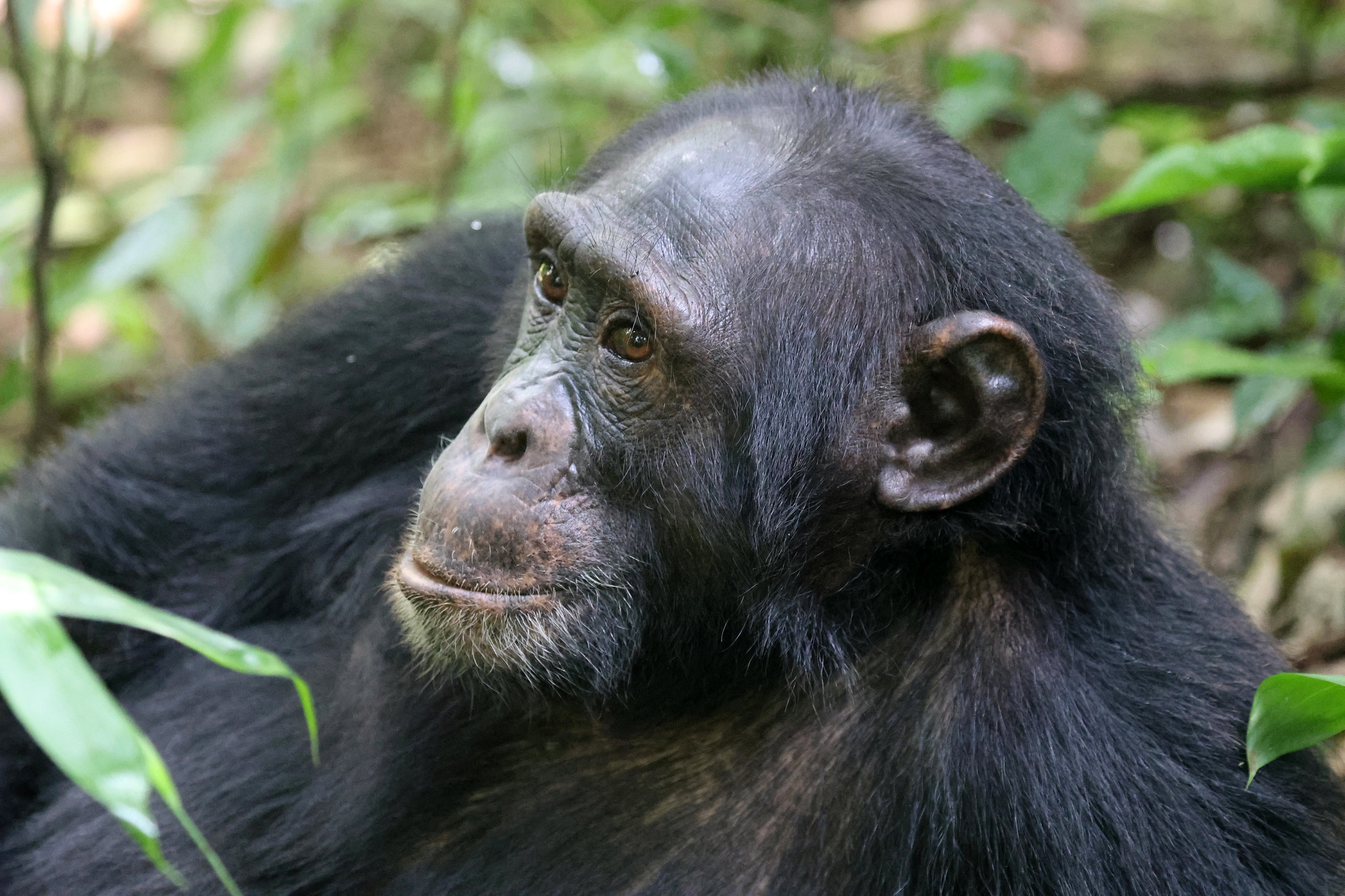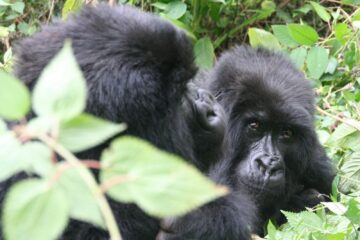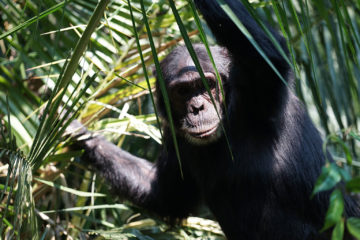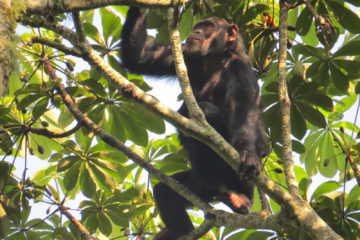Tucked away on the eastern edge of Queen Elizabeth National Park lies one of Uganda’s best-kept secrets: Kyambura Gorge. Known as the “Valley of Apes,” this lush, forested chasm stretches about 11 kilometers long and over 100 meters deep, creating a dramatic contrast to the surrounding savannah plains. The gorge is famous for its resident population of chimpanzees and offers one of the most unique primate trekking experiences in East Africa. In this comprehensive guide, we delve into why Kyambura Gorge chimpanzee trekking is a must-do adventure and how it stands out as a unique destination in Uganda’s safari circuit.
What Makes Kyambura Gorge Chimpanzee trekking Special?
Unlike more popular chimp trekking destinations like Kibale Forest, Kyambura Gorge offers a quieter, more intimate encounter with nature. The gorge is a biodiversity hotspot, home to not only chimpanzees but also red-tailed monkeys, black-and-white colobus monkeys, baboons, and over 200 bird species. The rainforest canopy, waterfalls, and meandering Kyambura River make it a scenic wonderland for eco-tourists.
Kyambura Gorge chimpanzee trekking provides an exciting contrast to the open savannahs of Queen Elizabeth National Park. It’s a rare opportunity to track primates in a dramatic underground forest that’s often described as a lost world.
Chimpanzee Trekking in Kyambura Gorge
What to Expect
Chimpanzee trekking in Kyambura Gorge involves a guided hike into the heart of the gorge, navigating steep trails, dense vegetation, and river crossings. Treks usually last between 2 to 4 hours, depending on the location of the chimpanzee group.
Although the chimpanzee population in Kyambura is relatively small (around 20-30 individuals), sightings are still fairly common thanks to daily tracking by experienced Uganda Wildlife Authority (UWA) guides. Observers get to watch the chimps in their natural habitat—feeding, grooming, playing, and calling out in their loud, haunting cries.
Permit Requirements
Permits for Kyambura Gorge chimpanzee trekking are more affordable than those in Kibale Forest. As of 2025, permits cost about $50 for foreign non-residents. This makes Kyambura an excellent choice for budget-conscious travelers.
Biodiversity in the Gorge
Kyambura Gorge isn’t just about chimpanzees. The forest ecosystem supports a range of wildlife, including:
- Red-tailed monkeys and vervet monkeys
- Black-and-white colobus monkeys
- Olive baboons
- Forest elephants (occasionally spotted)
- Over 200 species of birds, including African finfoot, blue-headed bee-eater, and the rare shoebill in nearby wetlands
The gorge also shelters unique plant life, including ferns, fig trees, and dense vines that give the area a primeval feel.
How to Get to Kyambura Gorge
Kyambura Gorge is located within Queen Elizabeth National Park, approximately 420 kilometers (about a 6-7 hour drive) southwest of Kampala, Uganda’s capital. The closest town is Kasese, and the nearby Kyambura Game Lodge and other lodges offer easy access to the trekking site.
Visitors often combine a Kyambura Gorge chimpanzee trekking experience with game drives in the Kasenyi Plains, boat safaris on the Kazinga Channel, and visits to the salt lakes of Katwe.
When to Visit Kyambura Gorge
The best time to visit is during the dry seasons: June to September and December to February. Trails are more accessible, and chimpanzee tracking is easier. However, the gorge remains open year-round, and the lush vegetation during the rainy season adds an extra dimension of beauty.
Where to Stay
There are several accommodation options near Kyambura Gorge, ranging from budget to luxury:
- Kyambura Gorge Lodge – A luxury eco-lodge with spectacular views of the gorge
- Enganzi Game Lodge – Midrange comfort with great access to both the gorge and Queen Elizabeth National Park
- Pumba Safari Cottages – Budget-friendly and ideal for backpackers
These lodges often include guided treks as part of their safari packages or can help arrange permits and transport.
Kyambura Gorge vs. Kibale Forest: Which is Better?
While Kibale Forest National Park is considered the premier chimpanzee trekking destination in Uganda, Kyambura Gorge chimpanzee trekking offers a quieter, more off-the-beaten-path experience. Kibale boasts over 1,500 chimpanzees and a high sighting success rate, but it also sees larger crowds and higher permit costs.
In contrast, Kyambura’s intimacy, stunning landscape, and budget-friendly nature make it an excellent alternative, especially for those already visiting Queen Elizabeth National Park.
Photography Tips for Kyambura Gorge
- Bring a zoom lens: Chimpanzees can stay high in the trees.
- Use low ISO settings: The dense forest is dimly lit; plan accordingly.
- Protect your gear: Humidity and sudden rain showers are common.
- Capture the environment: Don’t just focus on wildlife—photograph the lush foliage and dramatic canyon views.
Conservation and Challenges
Kyambura Gorge faces threats from deforestation, agricultural encroachment, and climate change. Conservation efforts are in place to protect this vital habitat, including reforestation projects and community-based tourism.
Visitors can contribute by choosing eco-friendly lodges, hiring local guides, and respecting park rules during treks. Sustainable travel is key to preserving Kyambura Gorge chimpanzee trekking for future generations.
If you’re looking to go beyond the usual safari itinerary and uncover a hidden gem of Uganda, Kyambura Gorge chimpanzee trekking should be on your list. With its dramatic scenery, rich biodiversity, and quieter trails, the gorge offers a truly immersive and unforgettable primate encounter.
Whether you’re a first-time traveler or a seasoned safari enthusiast, Kyambura Gorge delivers a raw, authentic experience that reflects the heart of Uganda’s natural beauty.






Tour Reviews
There are no reviews yet.
Leave a Review